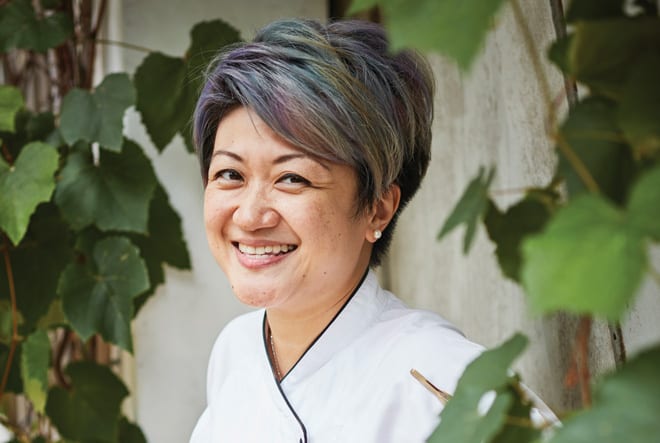“I think it’s a misnomer to suggest there is a “pure” cooking style. Each cuisine may have unique culinary features, but many elements are also shared. For example, Japanese miso, Korean doenjang, and Chinese doubanjiang are all bean pastes used in soups. But acknowledging this isn’t enough—you should also respect the culture of your produce, its flavour profiles, and what you want out of them.
I also used Akitakomachi rice—a premium variety known for its sweet, petite grain and plump texture. The rice is grilled onigiri style, giving it a crispy exterior and a soft, chewy interior. This adds a tinge of bitterness to complement the succulent beef tongue. Instead of using Japanese wakame that ends up too bitter when roasted, I lightly roasted Chinese seaweed normally found in yong tau foo soups. Lastly, I paired Korean-style raspberry sauce with sesame oil and mushroom stock. Oyster mushrooms add the finishing touch for that earthy, autumn flavour.”
(TEXT Matthew Fam Photography Raymond Toh/Raymond Toh/Vineyard Productions )
